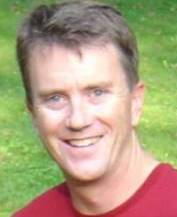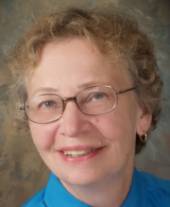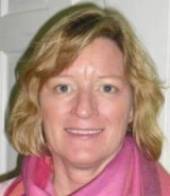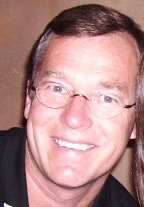
Lily Lake Summerhaven Association

 |
Lily Lake Summerhaven Association |
 |
Rev. 14-July-2024
Welcome Message from the President
Welcome to the Lily Lake Summerhaven web site. We hope you find the information you're looking for. Feel free to contact a Board member if you need assistance with anything.Mike Adam, President, Lily Lake Summerhaven Association,
a voluntary organization of Lilly Lake residents whose purposes
include community building, Neighborhood Watch, and communication
and presentation of issues affecting the community to the proper
authorities.
_____________________
See the calendar web page or Facebook for more information about Association events:http://lilylake.org/llcalen.
https://www.facebook.com/
MEMBERSHIP in the Summerhaven Association costs $10/year
(we're grateful for anything above that which you care to donate).
The funds pay for our insurance, web site, and costs associated
with our activities.
Please send your contact information and your dues check made
payable to the Lily Lake Summerhaven Association to our Treasurer:
Marc Skurski, 3515 100th Street, Pleasant Prairie, WI 53158
If you wish, you can use the membership
form.
To get your current email address on our email blast list, email
Marilyn at mjmagnuski@gmail.com.
_____________________
The Association is most grateful to NCast Corporation for the
donation of server space and technical support for this Web site.
_____________________
President
 |
Mike Adam 262-325-6450 |
First Vice
President
 |
Marilyn Magnuski 262-537-4750 mjmagnuski@gmail.com |
Second Vice
President
 |
Eileen Mullins 262-537-2752 mmull72133@aol.com |
|
Secretary
 |
Marlene Byrne Interim Secretary appointed until next election in August Marlenefbyrne@gmail.com |
Treasurer
 |
Marc Skurski 262-960-0846 mskurski001@wi.rr.com NOTE: If you're sending a dues check to Marc, please send it to: Marc Skurski 3515 100th Street Pleasant Prairie, WI 53158 |
The area around Lilly Lake is broken into 12 blocks of about 20
to 25 households each. Each block has a Block Captain, who is the
central contact point for information to and from the Board and
for collection of dues. To see a diagram of the blocks, click here.
| Block | Captain | Email &
Phone |
Block
Boundaries |
|
|
Mike Adam |
262-325-6450 |
All of 327th Ave, 7308 328th Ave, 6704 to 6906 Fox River Rd, 32811 to 33202 73rd St |
|
|
VACANT |
33209 to 33325
76th St., 7400 to 7557 Lily Lake Rd, 7507 to 7526 332nd Ave |
|
|
|
Bill Coe |
billcoe7@gmail.com 224-545-1204 |
33005 to 33117 76th St, 32906 to 32926 77th St, 7625 to 7722 328th Ave, |
|
|
Kelly Wilson | Kwilson23@wi.rr.com 262-537-4521 |
7728 to 8225 328th Ave, 2810 80th St |
|
|
VACANT | 32840 to 33260
80th St, 7935 to 7993 334th Ave |
|
|
|
Marilyn Magnuski | mjmagnuski@gmail.com 262-537-4750 |
7711 to 7929 334th Ave, 7655 to 7725 Lily Lake Rd, 33609 77th St. |
|
|
VACANT | 8012 to 8144 335th Ave, 8017 to 8137 336th Ave, 33509 and 33522 81st St, 33524 82nd St |
|
|
|
VACANT | 7811 to 7926 336th Ave, 33508 to 33610 80th St, 7909 to 7921 337th Ave |
|
|
|
Eileen Mullins |
mmull72133@aol.com 262-537-2752 |
7600 to 7662 Lily Lake Rd, 33421 76th St, 7614 to 7657 335th Ave, 33418 and 33707 77th St |
|
|
VACANT |
7503 to 7573 335th Ave, 7558 to 7582 Lily Lake Rd |
|
|
|
Pam (Cupp) Mastricola |
pcupp@wi.rr.com |
7606 335th Ave 7503 to 7561 336th Ave, 33606 to 33618 76th St, 7503 to 7549 337th Ave |
|
|
Bill Lill |
summerhaven2502@gmail.com 262-537-2502 |
7508 to 7552 334th Ave, 33323 to 33405 75th St, 7510 to 7540 Lily Lake Rd |
If you cannot reach your Block Captain and you want to discuss something urgent, please call one of the Board members.
__________________________________________________________________________________________DAN HIRCHERT (USDA WILDLIFE
SERVICES): GUIDELINES FOR CANADA GOOSE DAMAGE MANAGEMENT IN
WISCONSIN
Dan Hirchert from USDA Wildlife Services presented a slide show
about management of goose problems. The USDA gets involved with
geese because they, like deer, can damage crops.
Two populations of geese:
migrants and residents (Giants)
Migrants pass through our area only for short time when they
migrate from Hudson Bay to southern Illinois and back again. They
do not breed here.
Residents (Giants) migrate very little (only when everything here
freezes). They are very productive, averaging 5 eggs per nest.
They live 20 years, are adaptable, don't have many native
predators, and weigh up to 15 lbs.
Damage: crops, airplanes, park
areas, landscapes, water bodies, attacks on people
Resident geese can produce major crop damage, and they threaten
safety near airports. E.g., in 1995, an AWACS plane flew into a
flock of geese; the resulting crash killed all 24 military
personnel on board.
In urban areas, they can cause property damage, decimate
vegetation, contaminate water bodies, and increase erosion. They
can make such a mess that people stop using parks. They are also
aggressive and will charge children who are holding food or adults
who surprise them while they are nesting. During their molting
period (late June) when they are unable to fly, they can cause
traffic accidents because they walk everywhere, including in
roadways. They may create predator-proof nests in high places such
as roofs. If they succeed in raising a brood somewhere, they
return to the same place, and their young learn to return to the
same place.
Abatement: scare away and reduce
populations, educate the public
You can manage goose concentrations with various techniques:
propane cannons, pyrotechnics, flagging, fencing, and increased
hunting. Most of these techniques are not usable in urban areas.
Hunting laws allow high bag limits (usually 5/day) before the
migrants arrive. Hunting has helped manage the exploding resident
goose population. Sixty to seventy years ago, it was thought that
resident geese were extinct. In 1970, the DNR estimated there were
1600 resident geese in the state. Now there are probably 155,000.
The breeding population is increasing.
Education is important. People should not feed the geese. Local
ordinances can help enforce that idea. If you notice birds
starting to congregate, try to disperse them because they act as
decoys and attract more birds.
Non-lethal abatement methods include scare devices (like blow-up
figures that inflate on a timer), trained dogs, pyrotechnics,
repellents, and habitat alteration. If you discourage them in one
place, they will go to another nearby area.
They like a smooth transition from water to grass. So anything you
can do to break up that transition, like putting a band of rocks
along the shoreline, can help discourage them. Fences (plain and
electric), string grids, and big plants next to the shore are
other methods. For small ponds, stringing fishing line at 20-ft
intervals interferes with their ability to land in the water.
Because they are so adaptable, you may have to change your
disruption techniques from time to time.
Predators: skunks, raccoons,
foxes, coyotes
Skunks, raccoons, foxes, and coyotes normally don't take on an
adult goose, but they disrupt nests and will kill juvenile birds
for food. One area that had resident foxes stopped having any
trouble with geese because the foxes took out all the young birds.
Protected by treaty
Geese are protected by the Migratory Bird Treaty Act. You need a
federal permit to take eggs or birds.
Population management: reduce
breeding, increase mortality
It is our local decision what we'd like to do about the geese.
Then we apply for the permit.
Spraying 100% corn oil on the eggs suffocates the baby geese.
However, you need a permit to do this, and you need to check for
new eggs that the adults might produce. By adding dye to the spray
and rechecking the nest, you can see any new unsprayed eggs. If
you break the eggs during the adults' fertile period, they'll just
produce replacement eggs. They sit on the nests for 28 days.
They're fertile for roughly 25 days of that time.
Addling (shaking) the eggs is another option, but you have to
shake for a long time, and you need a permit.
Nests are hard to find. Geese love islands (for their protection)
and floating bogs. They can nest under bushes and trees. And you
may be attacked as you approach the nest.
2-year process to remove geese:
test for contaminants, then take birds away
Removing geese takes 2 years. The first year, the USDA collects 7
birds and tests them for PCBs, mercury, lead, and pesticides. The
25 contaminant tests take a long time. The collection takes place
near the end of June when the geese are molting and can't fly.
If the birds test clean (so far, only one community has tested
high for PCBs), the following year the USDA harvests the
agreed-upon number of birds. It is wise to leave a few birds for
goose lovers to enjoy so that the community does not become
divided between goose lovers and goose haters.
The birds are handled, caged, and euthanized humanely. They are
sent to a licensed poultry processor, who turns the meat into
gooseburger for food pantries. Smaller birds are donated to animal
sanctuaries for food. So far, 1600 geese have been pantried or
given to Native Americans for food, and 1800 geese have been used
for animal feed.
Effectiveness: manage the big
adults to allow other options to work
If you reduce the number of big adults, other less drastic options
may suffice to manage the geese in subsequent years. One community
hasn't contacted the USDA in 5 years after their first removal.
When you have a smaller population of geese, you attract fewer
migrants because there are fewer decoys.
Summary of actions
1. Reduce food and habitat.
2. Time your actions: act when the geese are nesting and
flightless. That's a roughly 3-week period in June.
3. Solicit neighborhood involvement.
4. Work with law enforcement.
5. Reduce geese to tolerable levels, but don't eliminate all
geese.
6. Be proactive. Don't wait until the situation is out of control.
If you have a few geese now, you'll have more later.
Costs: $2000 and $2000
Dan has found a lower-cost lab. So tests for contaminants now run
$2000 instead of $4000. Next year, it will cost roughly $2000 to
remove some birds. There is some grant money that may help defray
the cost.
Disturb the nests right now
The geese are already nesting and probably sitting on eggs. This
is the time to disturb the nests.
Dan Hirchert can be reached at 1-800-433-0663. He will collect the
7 geese to test for contaminants and apply for a grant. He'll also
let Ron Vollmer know when he comes so that Ardie can take pictures
for the web site.
